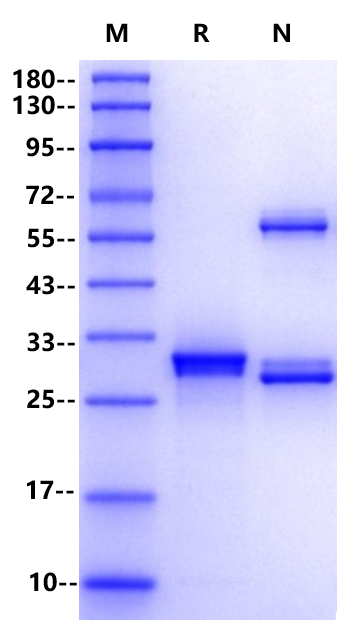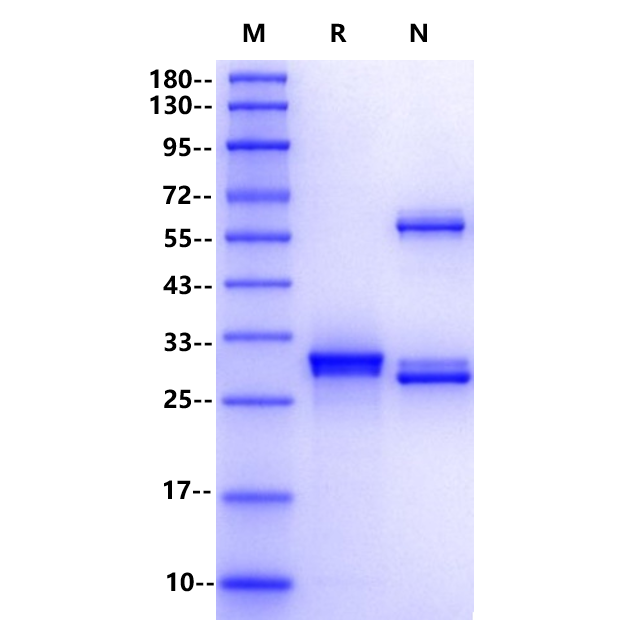2μg (R: reducing condition, N: non-reducing condition)
Product Details
Product Details
Product Specification
| Synonyms | Proteinase K |
| Amino Acid Sequence | |
| Expression System | PichiaPastoris |
| Molecular Weight | 29 kD |
| Purity | >95% by SDS-PAGE |
| Conjugation | Unconjugated |
| Tag | His Tag |
| Physical Appearance | Liquid |
| Storage Buffer | 20 mM Tris-HCl、1 mM CaCl2、50% Glycerol、pH 7.4 @ 25°C |
| Stability & Storage | Store at -25 ~ -15℃ for 1 years |
| Reference | [1] Kushnirov VV, Dergalev AA, Alexandrov AI. Proteinase K resistant cores of prions and amyloids. Prion. 2020 Dec;14(1):11-19. |
Background
Proteinase K is a powerful proteolytic enzyme with high specific activity and is a key reagent for DNA extraction. The enzyme is active in a wide pH range (4~12.5) and at high temperature (50~70°C), and is used for the isolation of plasmid or genomic DNA and RNA. In DNA extraction, the main function is to enzymatically dissociate the histones bound to nucleic acids, so that the DNA is free in the solution, and then extracted by different methods to remove impurities and collect the DNA. chelating agents such as EDTA or descaling agents such as SDS can not inactivate the enzyme.
Components
Storage Solution:20 mM Tris-HCl、1mM CaCl2、50% glycerol (pH 7.4 @ 25°C)
Protocol
Add the specified amount of Proteinase K storage solution according to the nucleic acid extraction instructions. Commonly used working concentrations are 50-100 µg/mL
Guidelines
Please avoid repeated freeze-thaw cycles.
Unit Definition
Picture
Picture
SDS-PAGE



